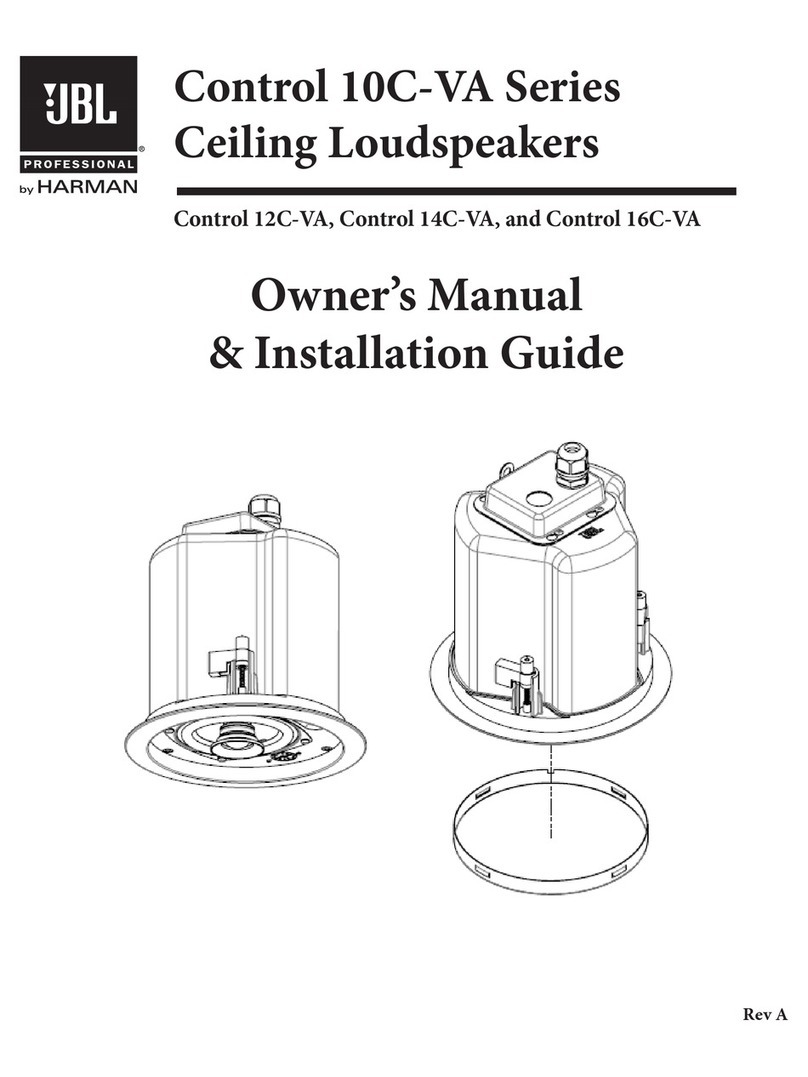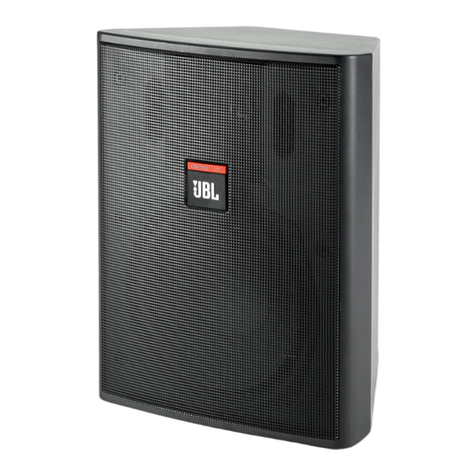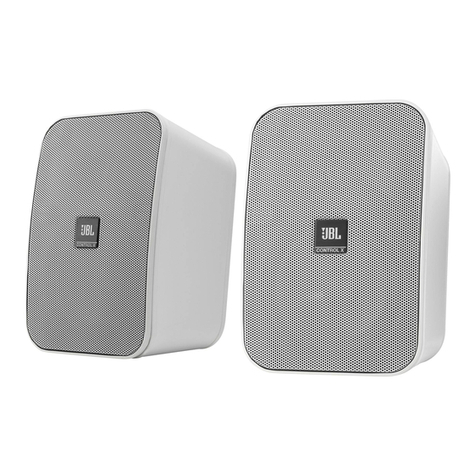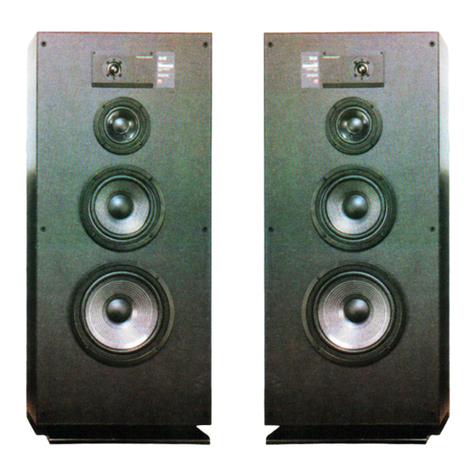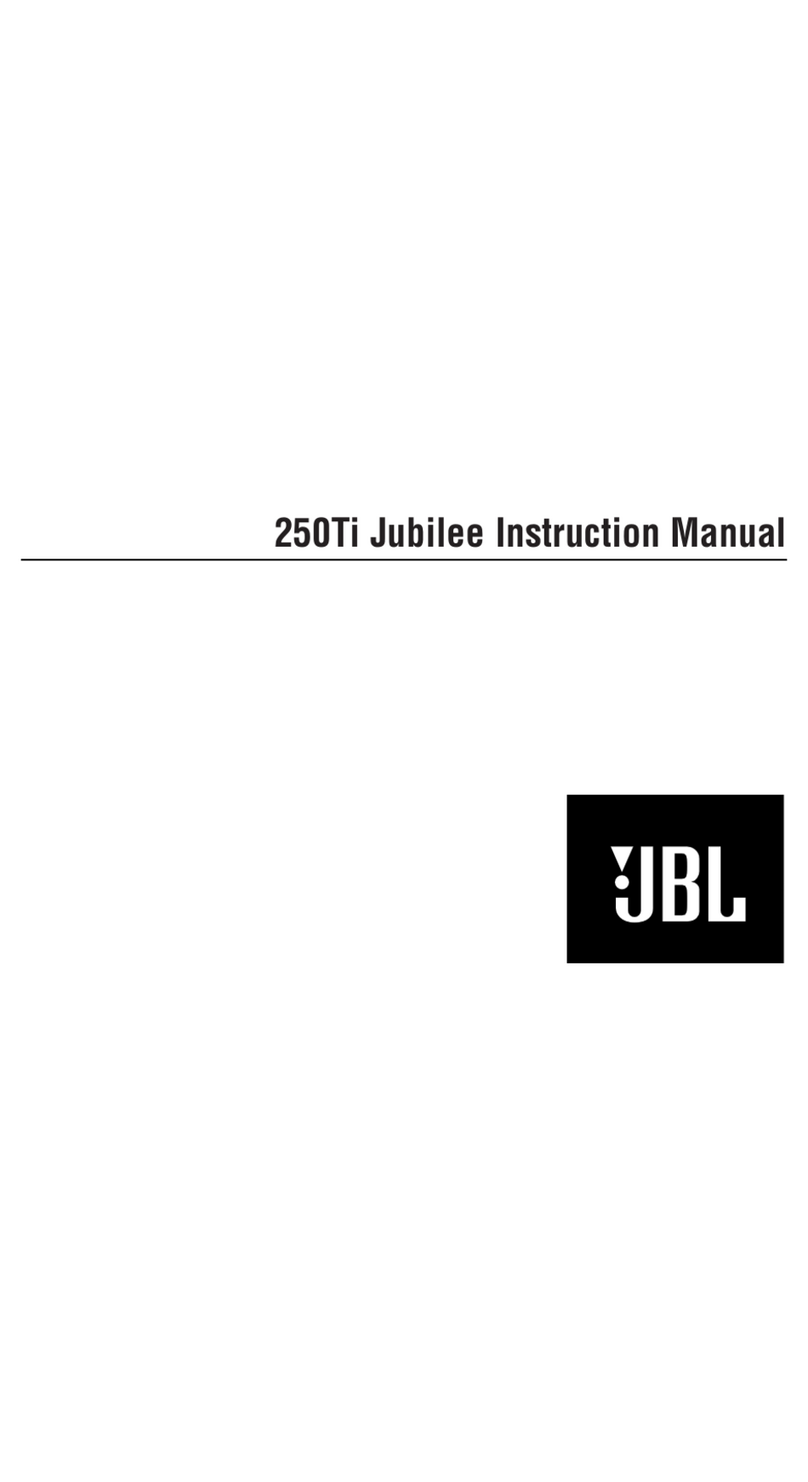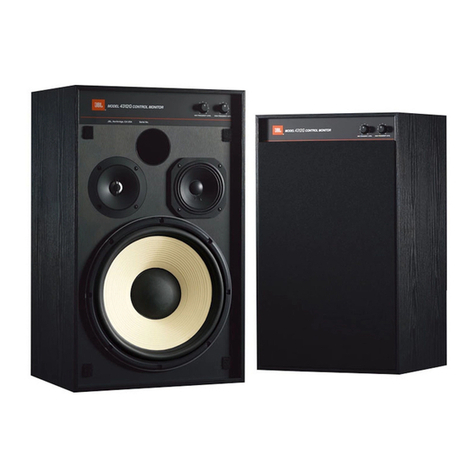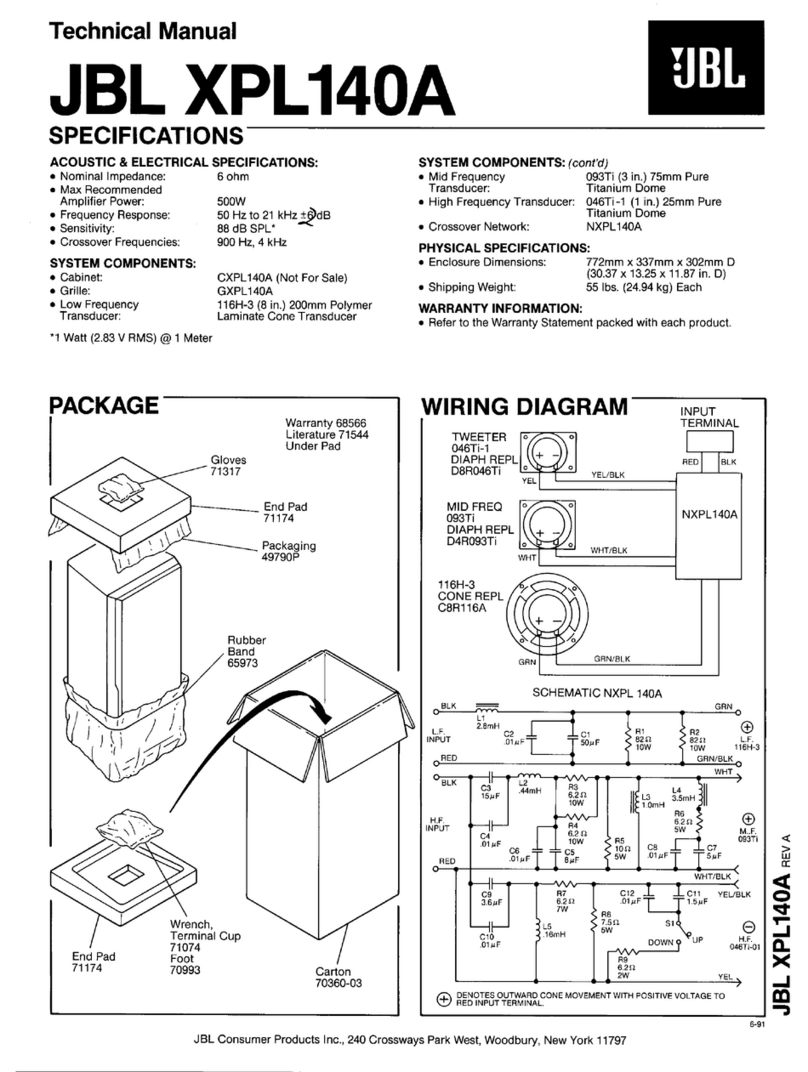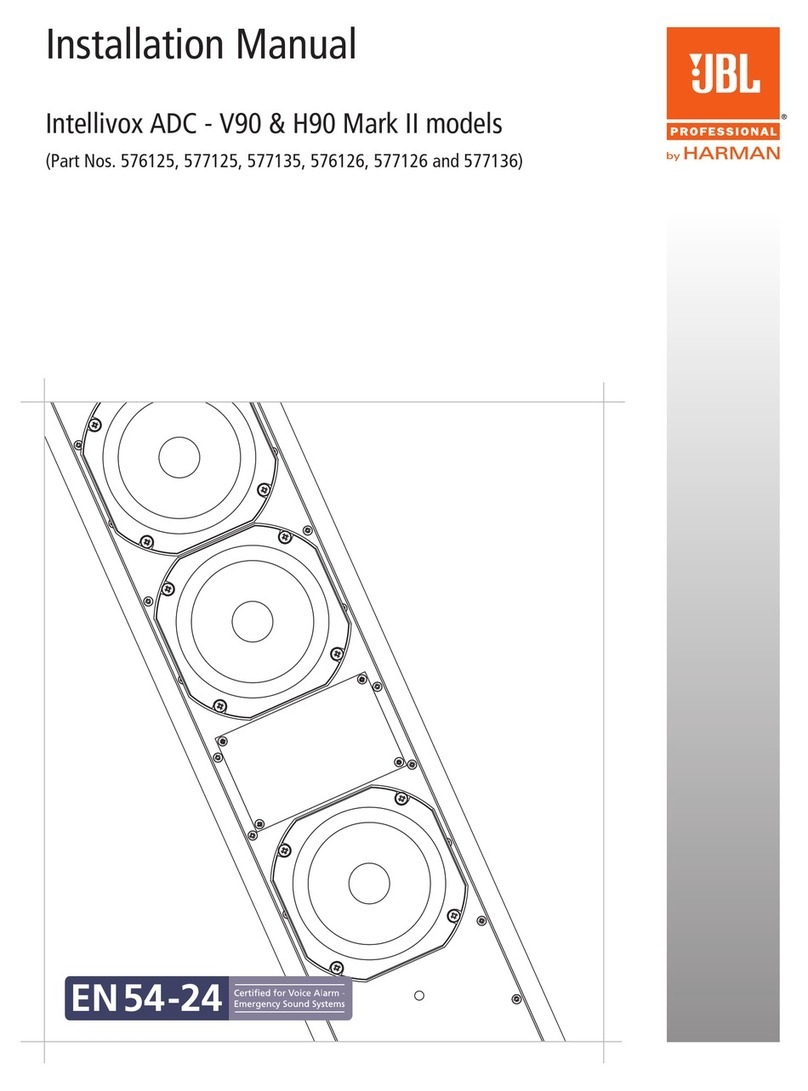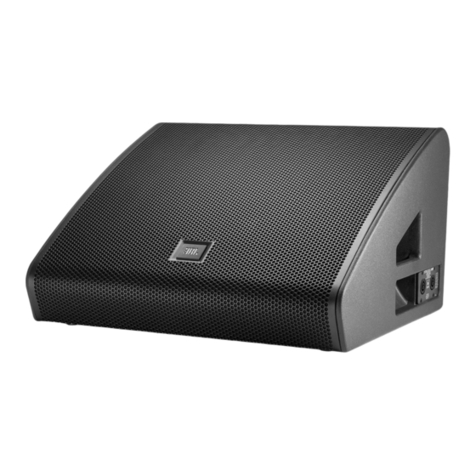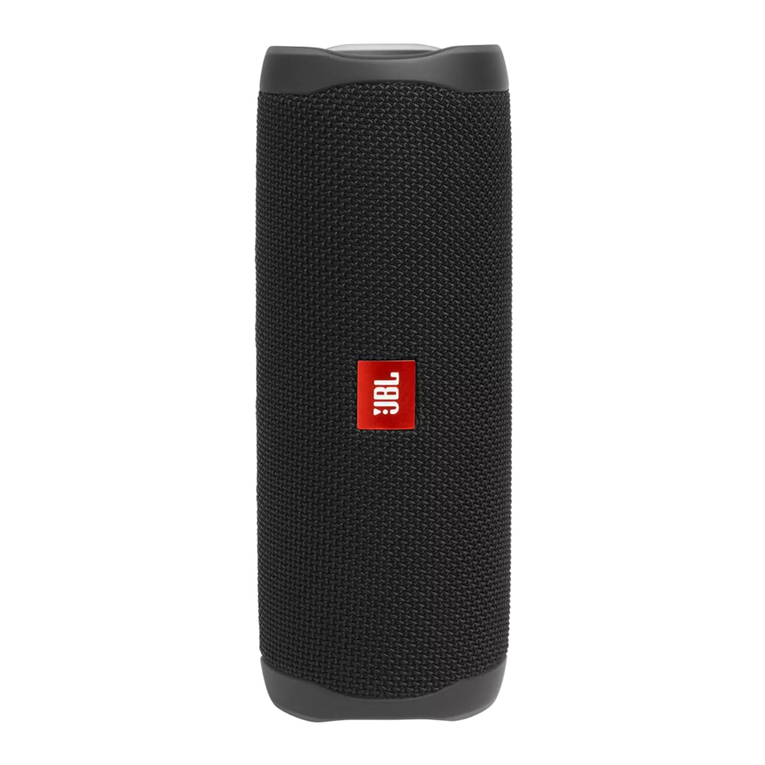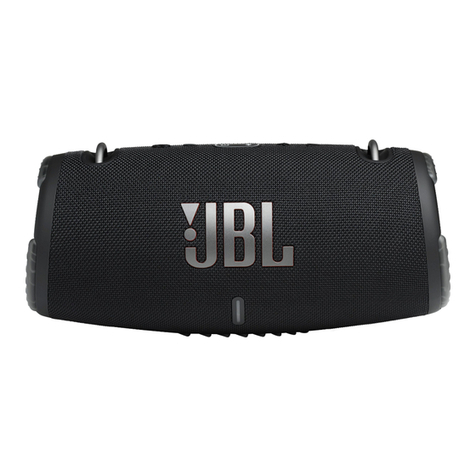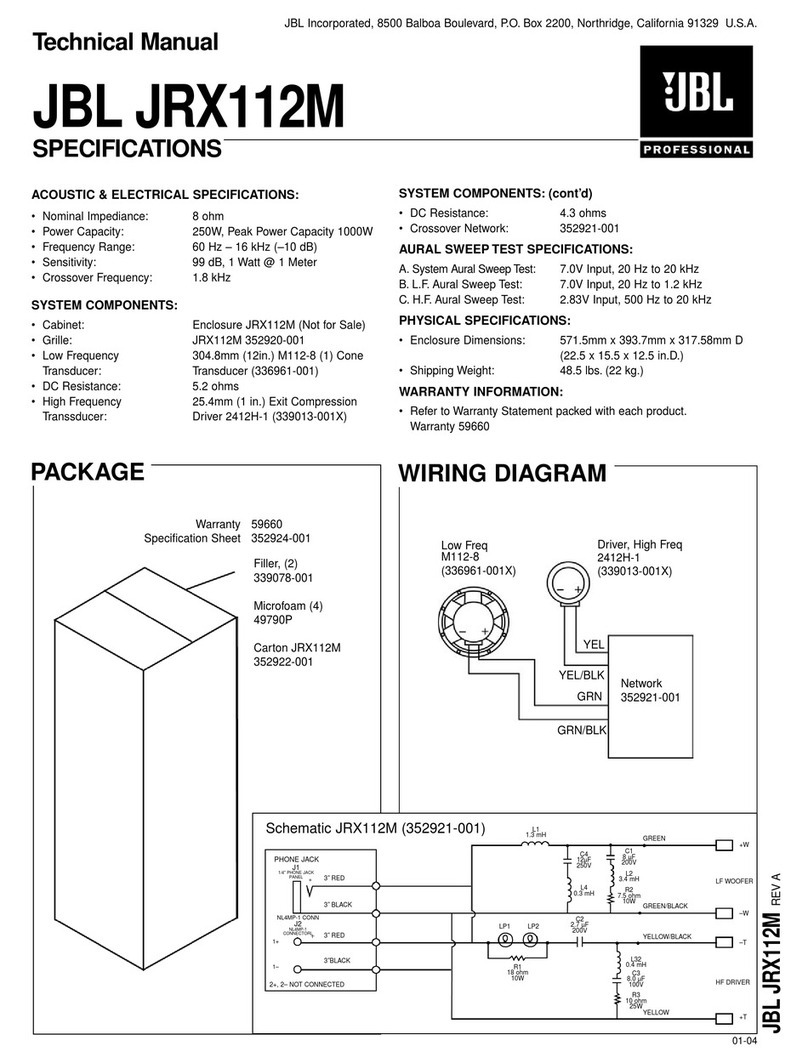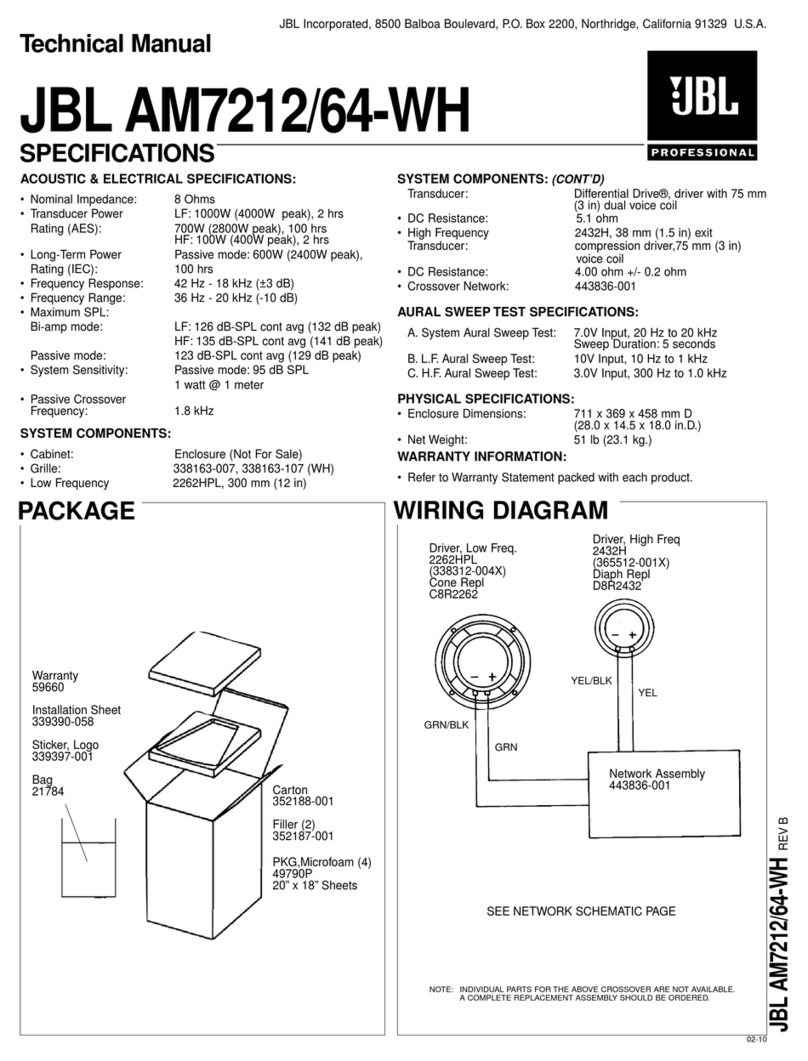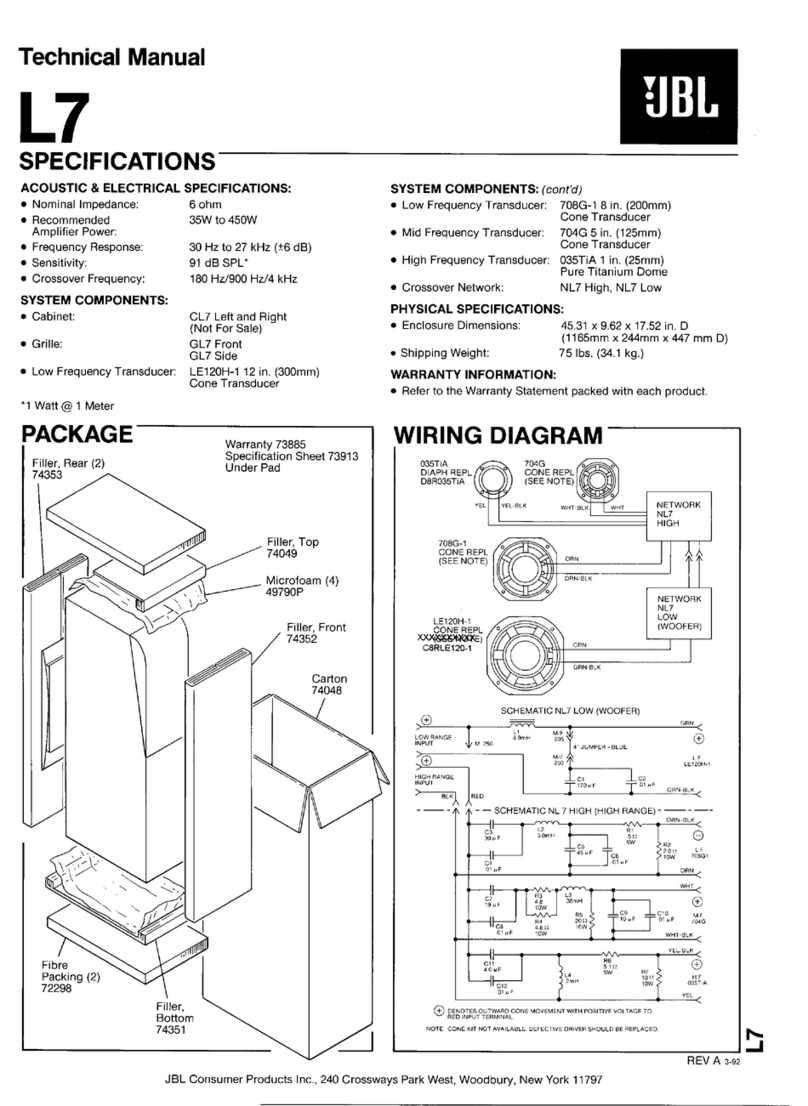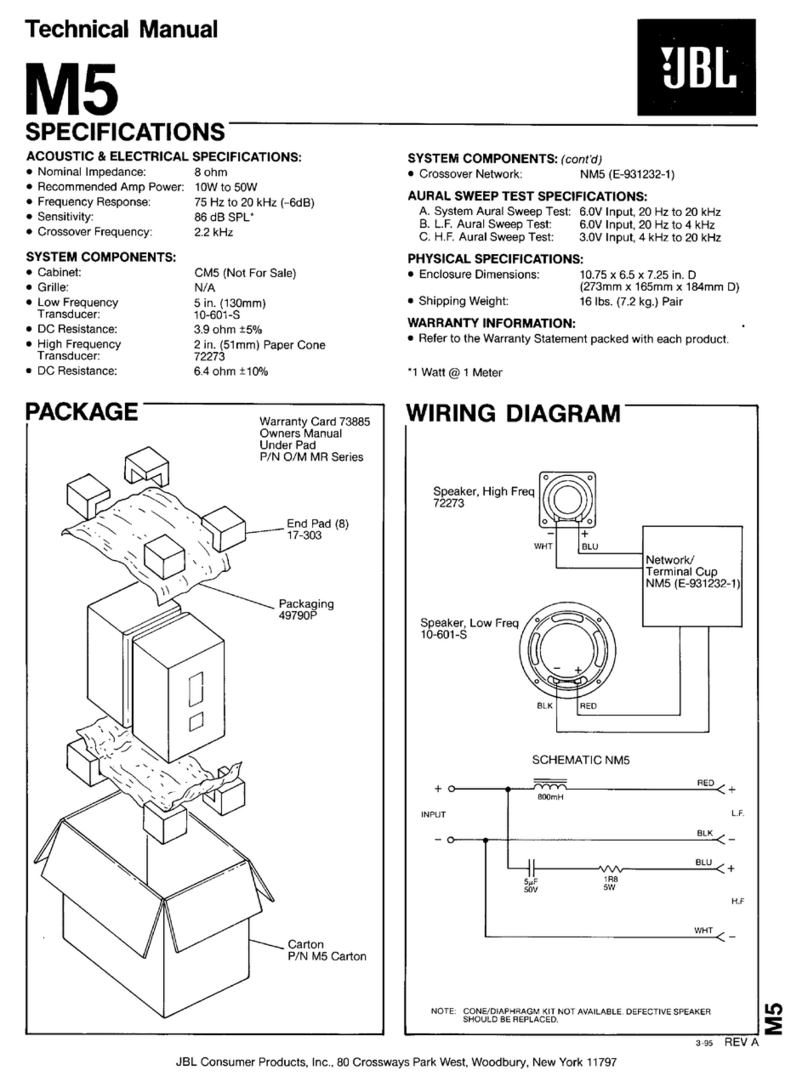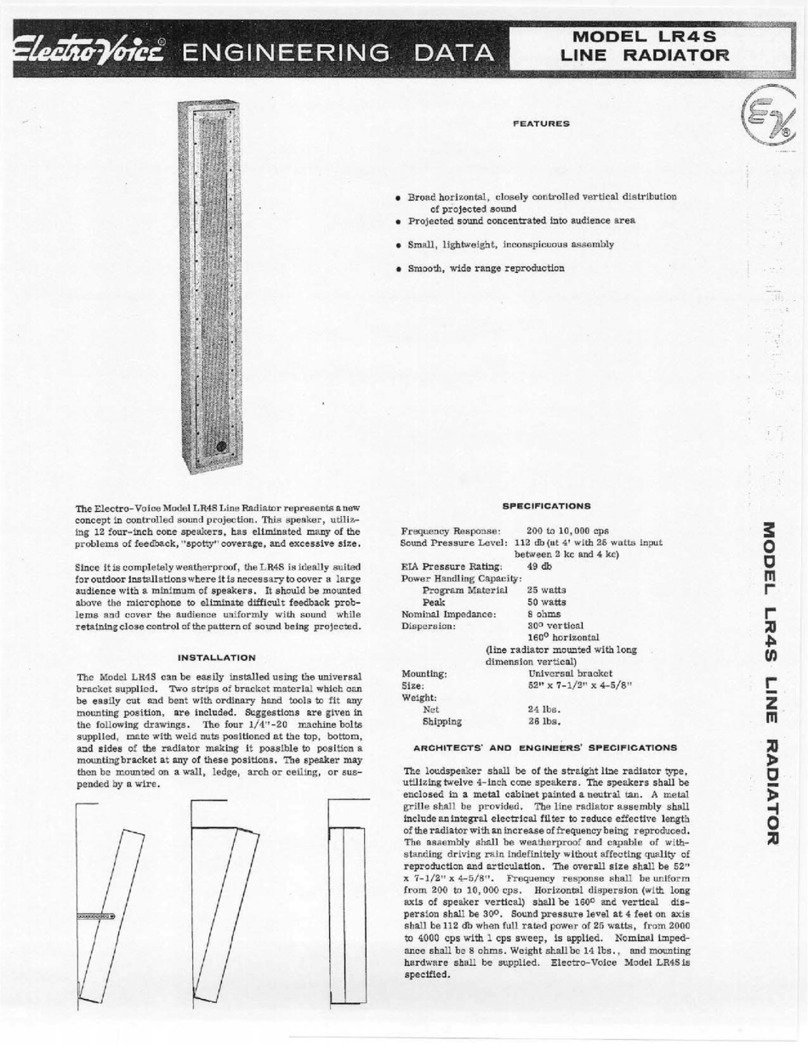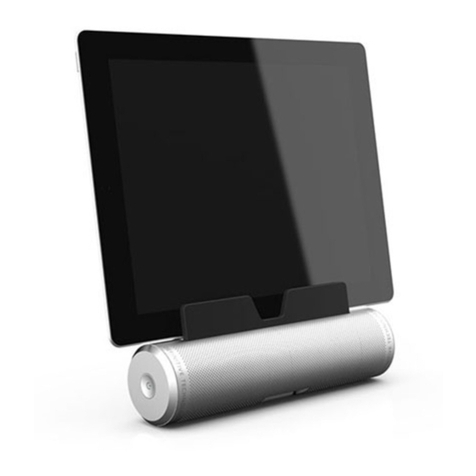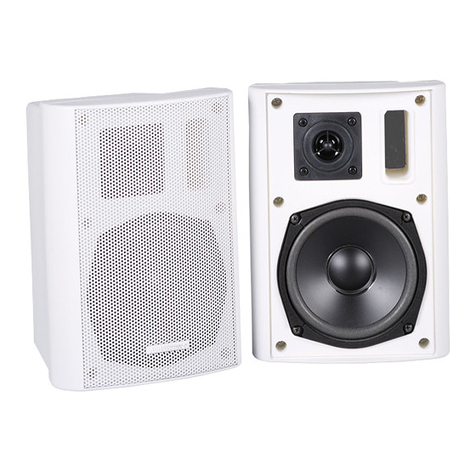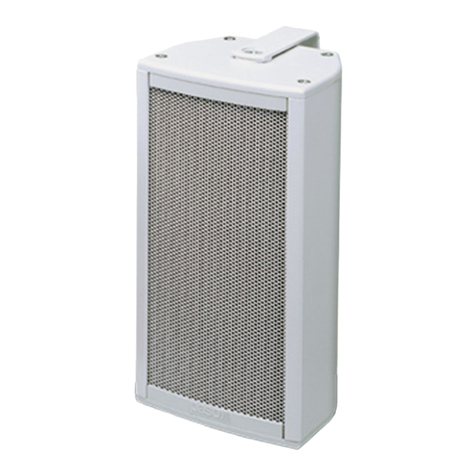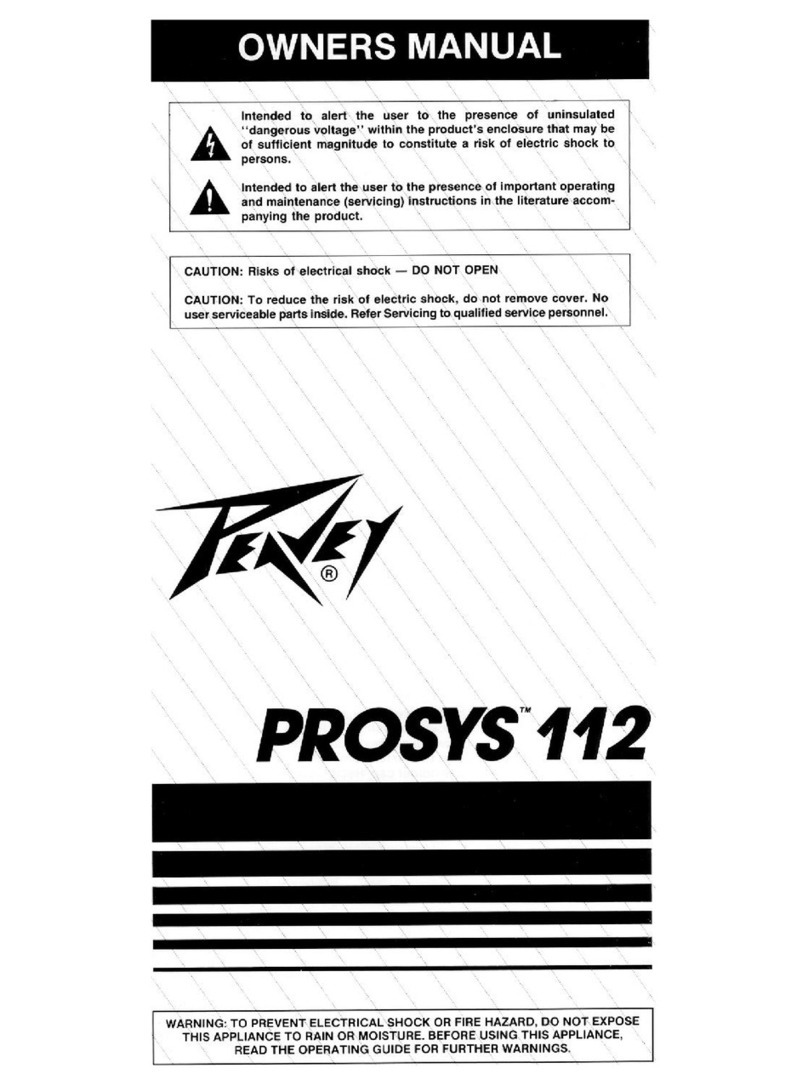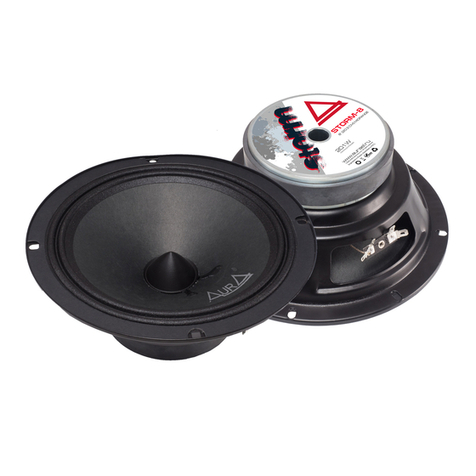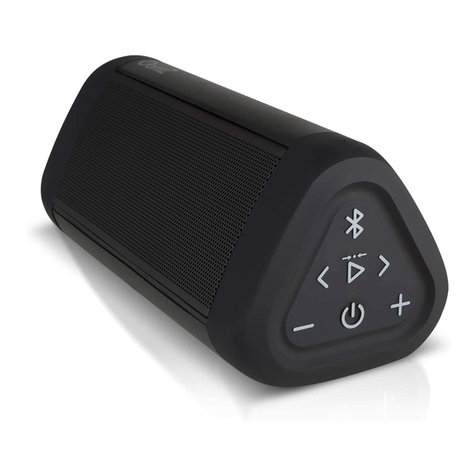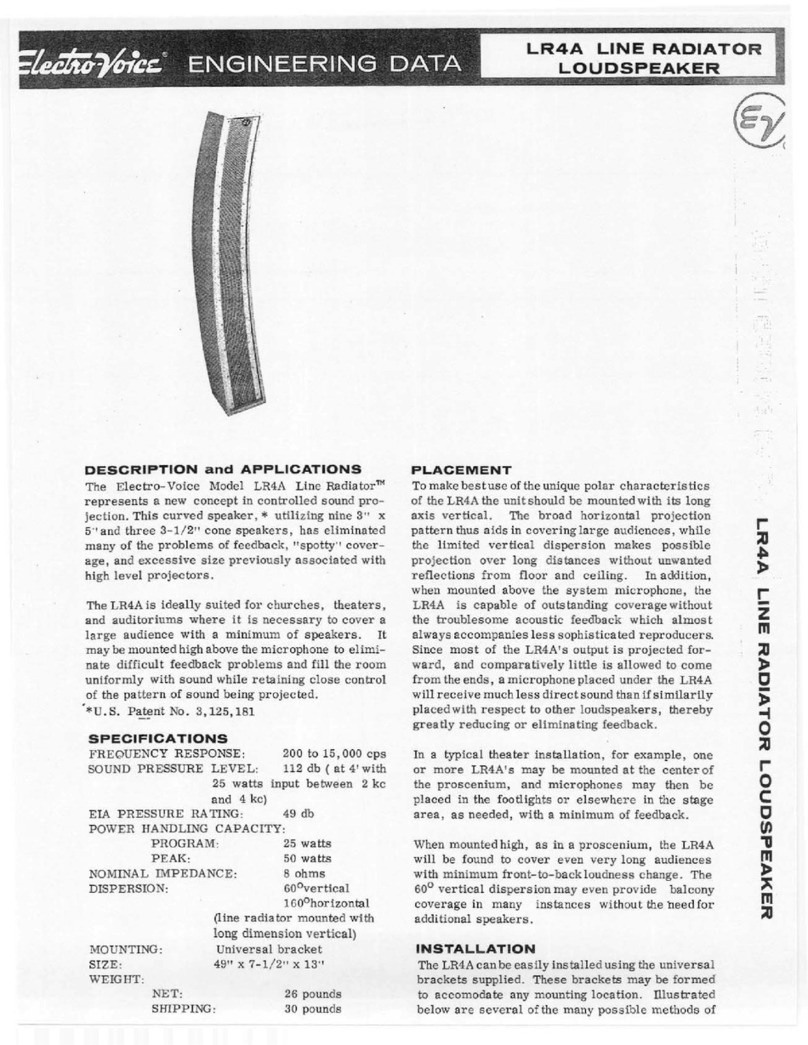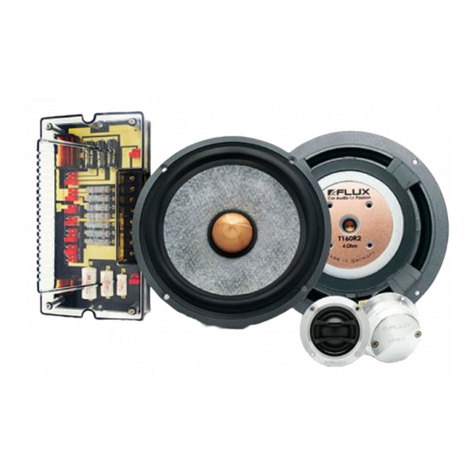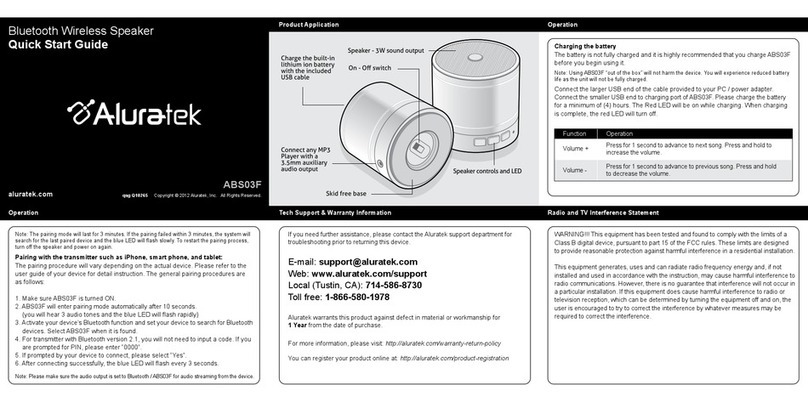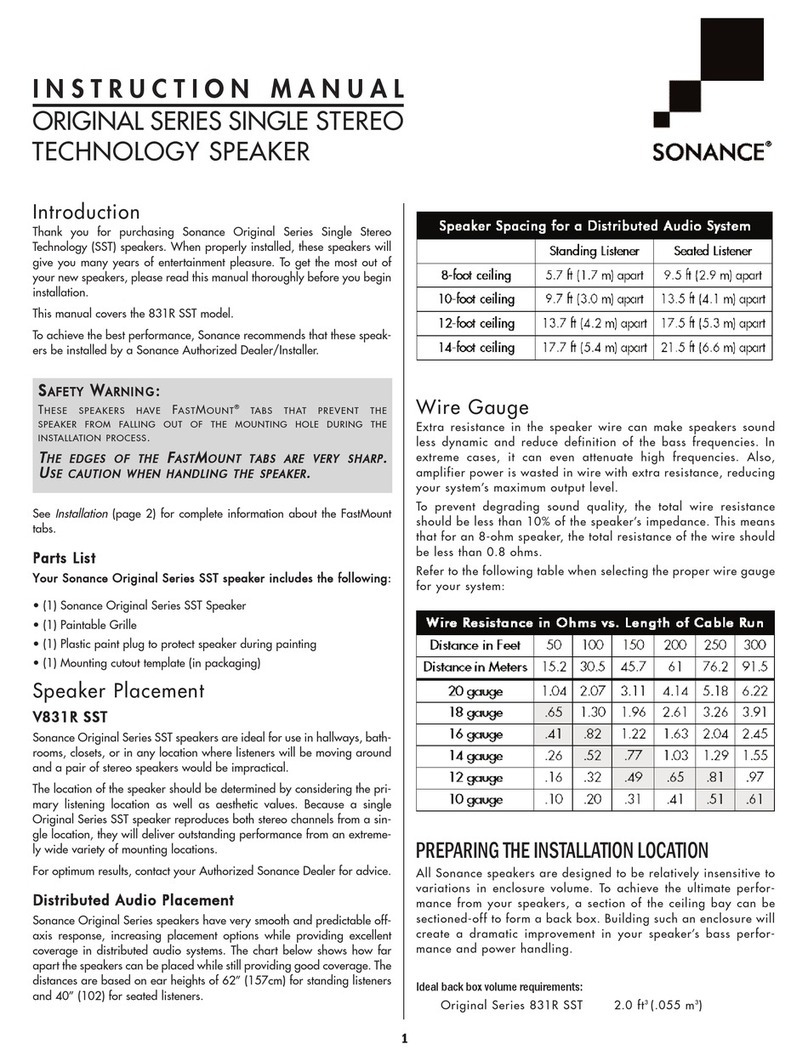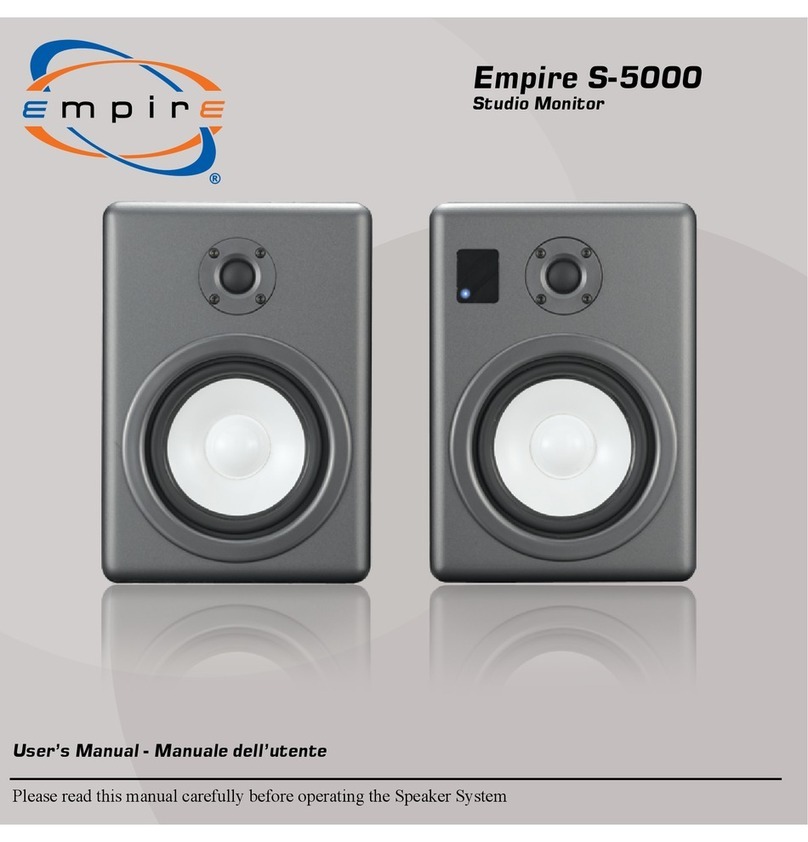Applications
•Live sound reinforcement, speech and vocals, music playback in entertainment, A/V, and institutional
venues-especially when ease of use and portability are important factors.
•Amplification, mixing, and monitoring for electronic musical instruments.
Features
The second generation of one of the most successful and influential professional speaker systems ever.
•10”Differential Drive®low-frequency driver with a neodymium magnet for low-distortion and light weight.
•1”(throat diameter) JBL compression driver with titanium diaphragm and ferro-fluid cooling.
•Bi-amplified 125 watts low frequency and 50 watts high frequency - actual power delivered to the drivers.
•Built-in 3-input mixer.One balanced mic / line selectable input, one dual-channelTRS 1/4”phone line-level
•Balanced loop-through / mix output.“Daisy-chain” additional EON speakers or send the mixed output to a
mixing console or auxiliary EON speaker.
•90° x 60° (nominal) constant directivity horn.
•Thermomaster®TotalThermal Management System®. A single piece, cast-aluminum baffle integrates the
woofer frame, horn, and amplifier heat sink.Air movement in the finned ports dissipates heat - no internal
or external cooling fans are required.
•Rugged, lightweight, black co-polymer enclosure with an ergonomic molded in handle and cast
aluminum baffle.
•Integral 35 mm pole mount receptacle with securing thumbscrew.
•Multi-angle enclosure for front of house or stage monitor application.
Specifications
Freq.Range (-10 dB): 65 Hz - 18 kHz
Freq.Response (±3 dB): 90 Hz - 16 kHz
Horiz.Coverage (-6 dB): 90° nominal
Vert.Coverage (-6 dB): 60° nominal
Rated Maximum SPL: 117 dB, @ 1 m (3.3 ft)
Dimensions (H xW x D): 493 mm x 356 mm x 307 mm (19.4 in x 14.0 in x 12.1 in.)
NetWeight: 10.4 kg (23 lbs.)
LF Driver: Integral frame with one 10” (254 mm) driver, dual neodymium magnet,
1.5”Differential-Drive®voice-coil.
HF Driver: JBL2412 1”(throat diameter) compression driver with titanium diaphragm.
Ferro-fluid cooled.
Amplifier Power LF: 125 watts @ low-frequency driver impedance.
Amplifier Power HF: 50 watts @ high-frequency driver impedance.
Input 1 Sensitivity: -48 dBu to 0 dBu for rated output (Mic/Line switch in MIC position)
-6 dBu to +20 dBu for rated output (Mic/Line switch in LINE position)
Input 2 & 3 Sensitivity: -12 dBu to +20 dBu for rated output
Output Level: +26 dBu (peak), Loop/Mix switch in MIX position
Audio Connectors Input 1: XLR/F, balanced
Audio Connectors Input 2 & 3: SingleTRS 1/4”Phone
Crossover Freq: 2.7 kHz
Loop/Mix Out: XLR/M, balanced.
AC Input: 110 - 230VAC, 50 - 60 Hz, 100 watts rating per UL, detachable IEC
power cable
6
About The EON10 G2
